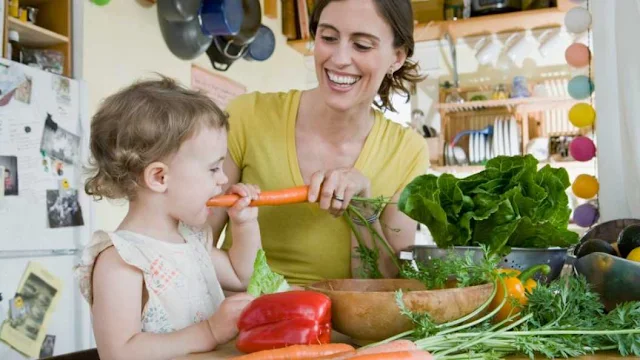What The Strategy To Get Kids To Eat More Vegetables?
If you have kids, one of the most difficult things to do is to feed them vegetables.A lot of various strategies may help you get your child to eat more vegetables like food adaptations, mealtime adaptations, repeated food exposure, nutrition education, social factors, and mixed-methods interventions.
Among all these methods, the most methods effective for increasing vegetable consumption of children aged two to five years is repeated food exposure
A Study on Vegetables
A team of researchers from Loughborough University and Aston University, both located in the U.K., reviewed methods for feeding more vegetables to children who are two to five years old.
The studies involve a lot of methods like repeated exposure, food adaptations, mealtime adaptations, social factors, nutrition education, and mixed-methods interventions.
They found that repeated exposure method was the most effective strategy in making children eat more vegetables as well as like vegetables more.
Moreover, most studies that tested the effectiveness of food adaptations method to increase children’s consumption of vegetables did not provide beneficial effects – such as flavor-flavor learning, flavor-nutrient learning, and visual presentation.
However, another study found that children might eat more green vegetables when eating it with all.
So, pairing disliked vegetables with liked flavors will increase their vegetable consumption.
Therefore, you must be pairing disliked vegetables with liked one will increase their vegetable consumption.
For social methods, non-food rewards are a successful strategy to help increasing preschool children’s consumption of vegetables.
In addition, another social method called modeling showed mixed findings.
Parental modeling alone may not be enough to increase consumption but may be effective when combined with other methods.
On the other hand, peer modeling may be effective. The inclusion of role models, for promoting increased vegetable intake in children, may be beneficial in mixed-methods interventions.
Lastly, the researchers found that educating children, particularly those in the preschooler age group, may potentially increase children’s vegetable consumption.
In short, Repeated exposure is a great strategy for making children eat more vegetables. Moreover, the method may benefit from being combined with either modeling by peers or parents or non-food rewards.
Why most children dislike eating vegetables
Most kids often dislike eating vegetables, but why?
Here are some reasons why children do not like eating them:
Biology
One biological factor that causes children to dislike vegetables is that instinctively, they need foods that provide the energy — and vegetables contain few calories that they do not provide enough energy.
The taste of the vegetables is another factor and what that taste implies.
The vegetables have a slightly bitter taste, and children potentially taste this bitterness more strongly than adults.
Time
Adults eat more vegetables than children due to they have become used to of the bitter taste of vegetables through repeated exposure
Paired associative learning
Lastly, children may not like vegetables because of the psychological concept of paired associative learning.
Children will more likely associate foods high in fat and sugar, such as ice cream, cake, and candy, with positive memories such as parties, holidays, celebrations, and rewards.
On the other hand, they more likely associate vegetables with less positive memories, such as nagging parents and unpleasant meals when they are forced to eat vegetables.
It doesn’t have to be hard to get kids to eat vegetables just be creative and introduce veggies to kids in a way they’ll like them and eat more vegetables.







